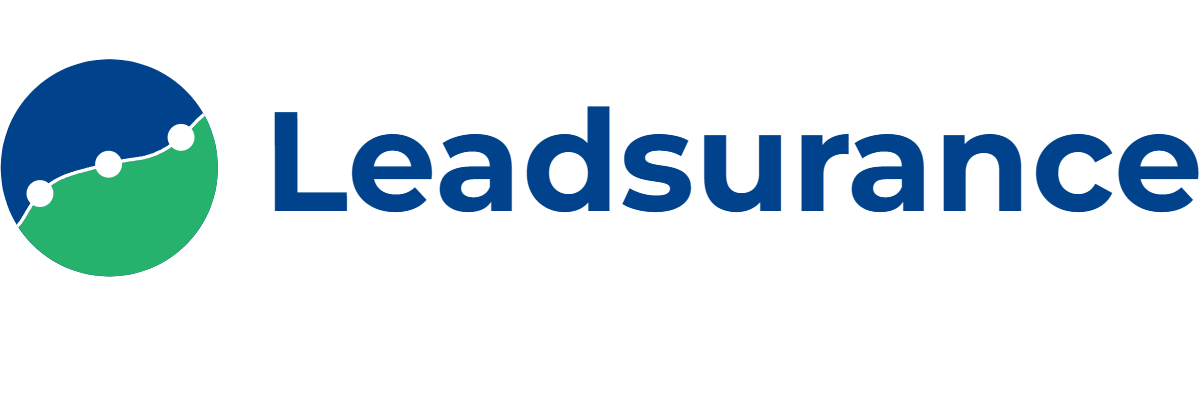Today’s expert advice comes from Thomas Barrett, CEO of Encirca, a leading domain name registrar company founded in 2001.
It’s frustrating. It’s discouraging. It’s even heartbreaking.
It makes you want to bang your head on your desk whenever it happens. And it happens to nearly every entrepreneur or online business owner who stays in the game for long enough.
You spend hours, maybe days, coming up with the perfect domain name for your new insurance website.
You write different ideas down on a notepad, or maybe a whiteboard.
You finally come up with a list of insurance domain names you like.
Something catchy. Something punchy. Something with “zing.”
Maybe it has a keyword meant to bring you relevant search traffic.
It encapsulates your brand succinctly. It tells you everything you need to know about your business in a single phrase. Maybe even a single word.
You go to register your favorite from your list of insurance domain names, eager to show your new website to the world.
Then, you find that the domain name you want is taken.
Well, so much for that plan.
You’ve spent time, money and energy trying to come up with this domain name. You don’t want to just give it up if you don’t have to.
What do you do?
Don’t despair. It turns out, you have a number of options in this situation. None of them involve starting the laborious process of coming up with a new domain name from scratch.
Here are your options when you find out that the domain name you want is taken.
We partnered with Namecheap to bring you popular domain names for just $0.99 and .com domains for $8.88.
Buy the Domain You Want
The immediate answer to your problem is to contact the owner of the domain you want and offer to buy it from them.
This can require a little detective work and probably won’t work for most active insurance domain names with businesses using them in their operations.
However, in some cases, you will find that the website hosted on your ideal insurance domain name isn’t active and the owner may be interested in selling it. Or you may find that someone is squatting on the domain name with every intention of selling it.
Most websites are likely to have contact information displayed somewhere on the domain. This will allow you to get in touch with the owner of the domain directly.
This won’t always be an option though. If the contact info can’t be found on the webpage, you may have to dig a little deeper.
In that case, you can do a WhoIs lookup and find their domain name registry. This should allow you to see their name, contact information, and other information like the domain’s expiry date.
The only problem is that many domain name registrars make WhoIs information private as part of their service.
If that’s the case, you’re going to have to dig a little deeper.
Estibot is a free service that allows you to find a domain’s historical WhoIs data. This would enable you to find the domain’s previous owner. It’s like going to your local county tax assessor’s office to find the owner of a street address.
You can get in touch with them, and find out who bought your preferred domain from them. That should give you a place to start.
Then, once you find the domain’s owner, you can make them an offer.
You could choose to give them a figure and negotiate from there.
However, this might not work out to your advantage as buying your domain name from its previous owner could easily run you hundreds or even thousands of dollars. They could also just tell you that the domain is not for sale.
Using a domain appraisal tool should help give you an idea of where to start in the negotiation process.
Wait for the Domain to Expire, Then Buy
We partnered with Namecheap to bring you popular domain names for just $0.99 and .com domains for $8.88.
Sure, you could decide to play fair, approach the domain’s owner upfront and purchase it from them directly as a business transaction. Then again, being sneaky about it could be much more fun and profitable. You could wait until the domain expires and snatch it up while you have the chance.
If you scroll down to the bottom of your WhoIs lookup, you should be able to see when the domain will expire.
That will be your opportunity to buy the domain you want yourself, without having to deal with the previous owner. It’s similar to sniping in an eBay option.
You can monitor the domain you’re after with domain research tools.
The problem with this option is that it takes patience. It could be months or even years until the exact domain you want is available for purchase and new ownership.
Alternatively, you could also just buy an expired domain anyway rather than wait for the exact domain you want to become available.
A new domain might feel fresh and exciting, but an expired domain that has some history might also have keyword rankings and SEO backlinks that would help get you organic search traffic. That’s not a bad thing.
You can use a domain expiry checker tool like expireddomains.net to find expired domains and take them for yourself. It can also show you their backlink profile and traffic, which can help you in your purchase decision.
Make an Alternate Version of Your Domain Name
Instead of buying the domain you want from its current owner or waiting for it to expire, you could just make a small tweak or change to the domain you want.
That would allow you to start with a fresh domain name that still encapsulates your brand, without having to spend more money than you can afford.
Making an alternative to your domain name is likely the easiest and best option available to you.
If you’re clever, creative and flexible, you can come up with a substitute for your domain name that’s just as effective as the one you originally wanted. You also won’t have to pay upwards of thousands of dollars for it.
Try using these domain hacks if this is something you’re willing to try:
-
- Add -ify to your brand, e.g. “insurify.com,” “brokerify.com,” “protectify.com”
- Connect an additional word at the beginning or the end of your domain name, in the syntax: brandnameADDEDWORD.com. Agent, Broker, Agency, e.g. “joebobconsulting.com,” “trevoragent.com
- Add a verb, adjective or article to your domain name, e.g. “yourinsuranceagent.com,” “bestinsurance.com,” “myagency.com,” “samtheinsuranceagent.com”
- If you’re outside the U.S., you could try using a local ccTLD e.g. .co.uk (U.K) or .ca (Canada)
- Add your home country or state to your domain, e.g. nissanusa.com or texasagencyname.com
- Find two different words and add them together. You can use something like NameMesh to build a list, then comb through the best options
It will take some effort, but coming up with some domain name alternatives could save you a lot of valuable time and resources. Give it a try, and see what you come up with.
Use a Different TLD
We partnered with Namecheap to bring you popular domain names for just $0.99 and .com domains for $8.88.
Is the domain you want a .com? Do you have your heart set on the name? If so, then your final option is to use a different TLD.
A TLD is the extension at the end of your domain, your “.com” or “.net”. They signify to browsers and search engines what your business does, or possibly what country you’re based in.
In the United States, .com domains are seen as more authoritative and trustworthy, and most website visitors don’t trust domains that end in anything other than a .com.
Or at least, that used to be the case. In more recent years, alternative TLDs have become increasingly popular.
If you’re open-minded, registering your name under an alternative TLD could give you options. Using a non-.com domain won’t hurt your search traffic, as all TLDs are equal in terms of SEO.
For example, .io, .app, and .bot TLD extensions are often very popular among software companies, SaaS companies and tech startups. That could be a good fit, depending on your business.
Yoast is one of the most popular SEO software products, used by thousands of websites on WordPress. Their company had this to say on the subject of how a domain name relates to your business:
“We prefer short domain names but what’s really important is to have a domain that you can build a brand on. Following the EMD update in 2012, branding became even more important as opposed to having a keyword in the domain.”
You have literally thousands of alternative TLDs to choose from. Domains like .associates, .agency, .biz, .academy, .coop, even goofy ones like .pizza and .dog.
While it’s true that .com domains are the most popular, you can use an alternative TLD and turn it to your advantage if it works for your business. You can make it a part of your business and stand out from your competition, as long as you can successfully associate it with your brand.
Domain Name Best Practices
When and if you decide to workshop your domain name, whether by wordsmithing it or adding a non-traditional TLD at the end, there are few best practices to keep in mind when making one:
- Don’t exceed two or three words. Shorter names are easier to remember and type into an address bar
- Keep it simple! Your users need to be able to remember it easily
- Avoid hyphens. Using hyphens can be used to separate two words, but they often come across as spammy
- Use a broad keyword, if possible. Preferably one that relates to your business
- Avoid using numbers. They can be difficult to type and remember, and may hurt your brand recognition
- Never, ever use underscores
- Avoid using brand names and trademarks used by other companies
Remember, your domain name should be reflective of your website’s brand.
To Sum Up
Great insurance domain names aren’t easy to come by and selecting the perfect one for your business will take some creativity.
Finding out the domain you wanted for your website has been taken is frustrating and discouraging, but there are ways to work around it if you’re thoughtful or lucky.
Remember, there is no such thing as a perfect domain, so get creative.
To summarize, here are your options when you find that the insurance domain name you want is taken:
- Find the owner of your chosen domain, and offer to buy it from them
- Wait for it to expire, then take it
- Hack or tweak your domain name to one that’s available
- Use a different TLD
Are you brainstorming ideas for your perfect insurance domain names? Let us know your questions in the comments below.
We partnered with Namecheap to bring you popular domain names for just $0.99 and .com domains for $8.88.






